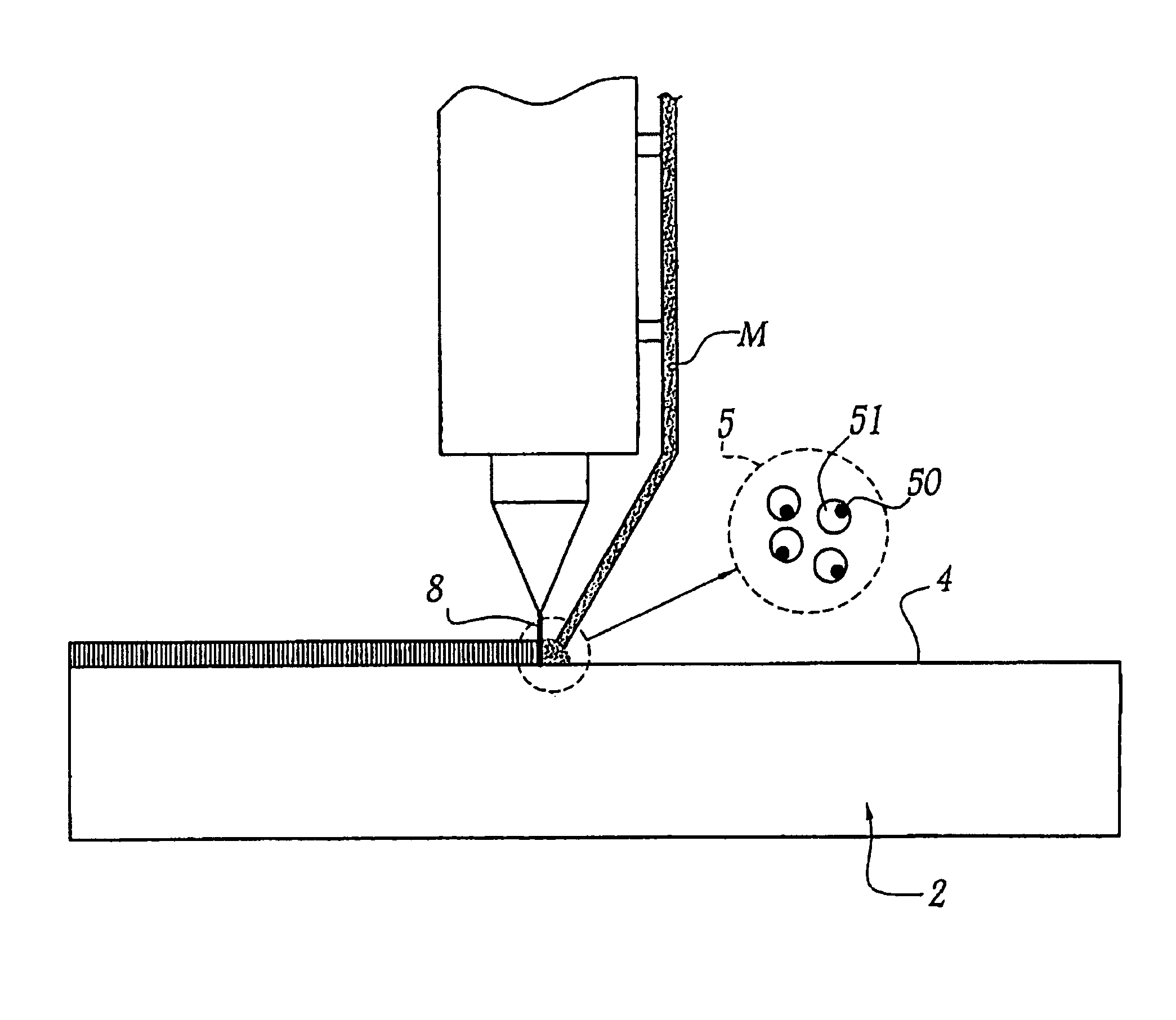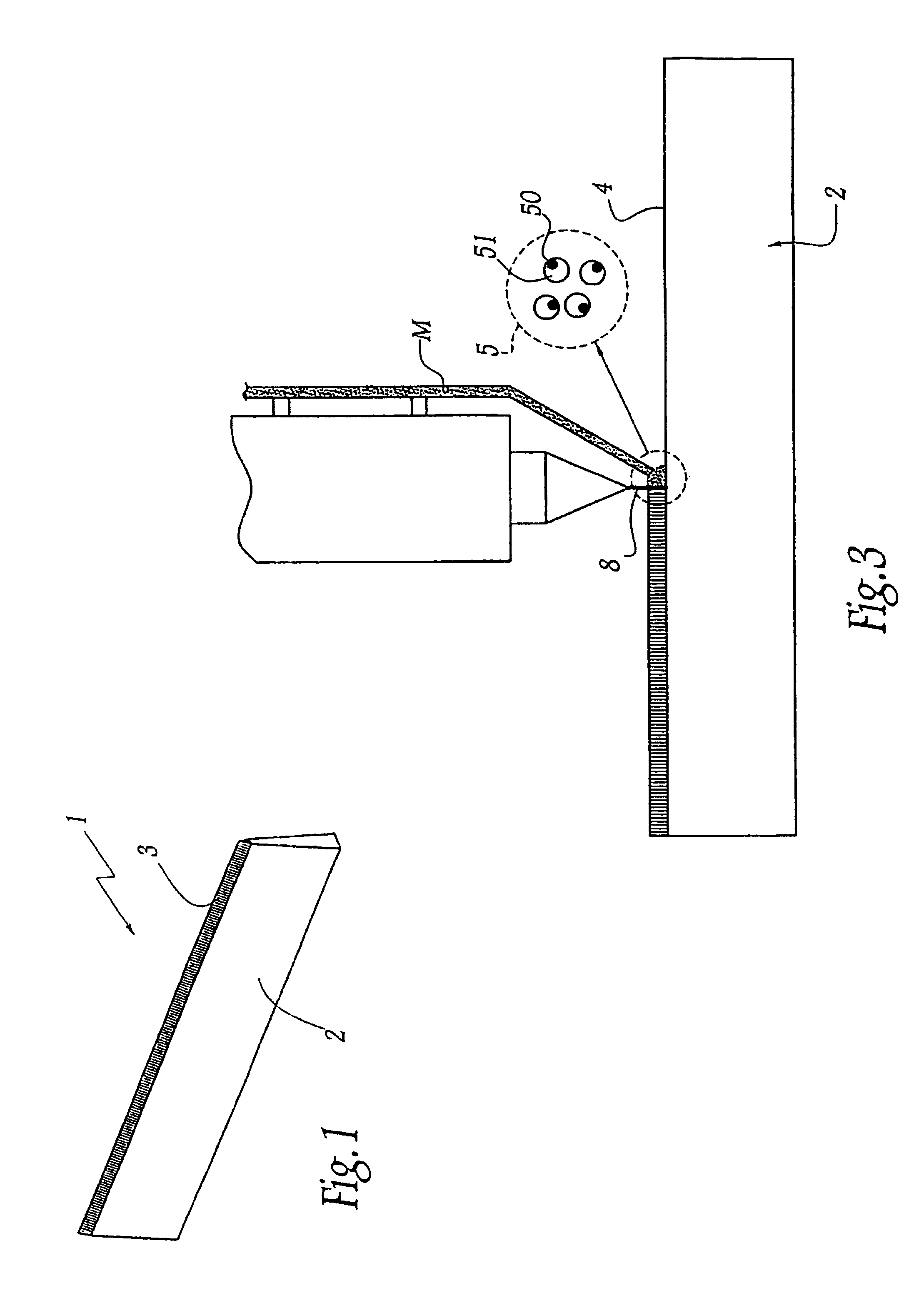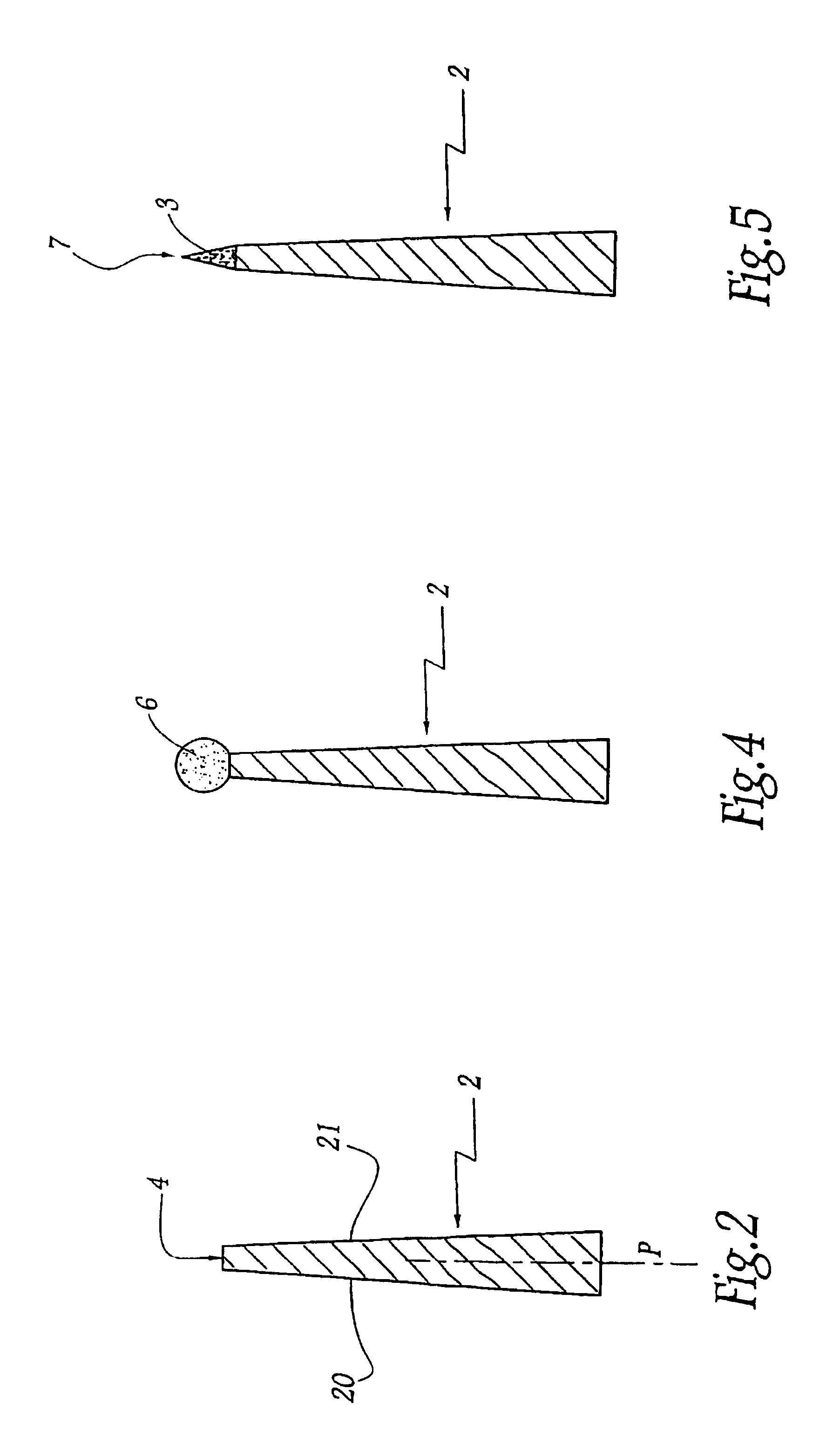Method of producing a cutting blade and cutting blade thus produced
a technology of cutting blades and cutting blades, which is applied in the field of blade manufacturing, can solve the problems of inability to repeat indefinitely, blades are liable to present premature wear of cutting edges, and are not suitable for use on any type of blades, and achieve the effect of high degree of modularity
- Summary
- Abstract
- Description
- Claims
- Application Information
AI Technical Summary
Benefits of technology
Problems solved by technology
Method used
Image
Examples
Embodiment Construction
[0036]The blade 1 shown in FIG. 1 is drawn in simplified form. It is also provided with a support or fastener means (not shown) for the blade, and / or handle means (likewise not shown) for the blade, e.g. a knife handle. The blade 1 presents a blade body 2 of dimensions that are slightly smaller than the overall size of the finished blade 1. The blade body 2 supports a cutting edge 3 in which the cutting edge proper, i.e. the zone that comes into contact with the substance for cutting, is constituted by the make-up material. The blade body 2 is made of at least one stainless steel, advantageously of food grade. For example it may be a standard steel in compliance with the AISI standard: 304L, 316L, 410, 420A, 420B, 420C, 425, 431, 440A, 440B, 440C, or it may be one of steels of the kind sold by the supplier Sandvik under the references 12C27 and 19C27. The blade body 2 is made using conventional techniques, such as, for example: machining, molding, forging, sintering, grinding, cutti...
PUM
| Property | Measurement | Unit |
|---|---|---|
| Dimension | aaaaa | aaaaa |
| Agglomeration enthalpy | aaaaa | aaaaa |
Abstract
Description
Claims
Application Information
 Login to View More
Login to View More - R&D
- Intellectual Property
- Life Sciences
- Materials
- Tech Scout
- Unparalleled Data Quality
- Higher Quality Content
- 60% Fewer Hallucinations
Browse by: Latest US Patents, China's latest patents, Technical Efficacy Thesaurus, Application Domain, Technology Topic, Popular Technical Reports.
© 2025 PatSnap. All rights reserved.Legal|Privacy policy|Modern Slavery Act Transparency Statement|Sitemap|About US| Contact US: help@patsnap.com



